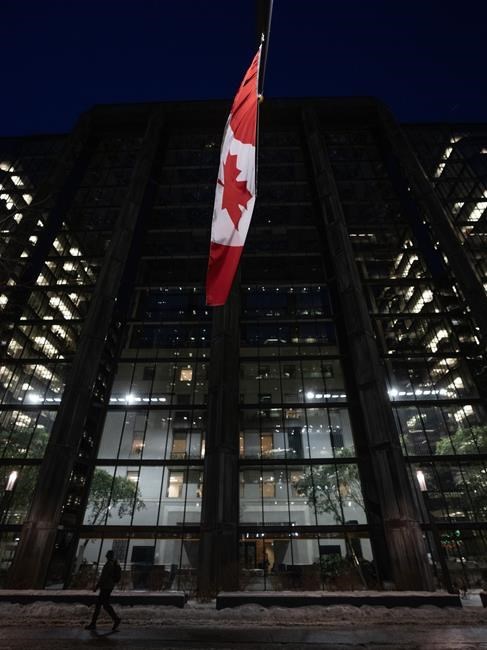OTTAWA — The Bank of Canada brushed off questions about rate cuts as it held its policy rate at five per cent, arguing inflation is still too high to justify lower borrowing costs.
Governor Tiff Macklem, who held a news conference after the interest rate announcement on Wednesday, acknowledged that inflation has continued to ease and the economy is weakening.
But he said underlying price pressures are still stubbornly high, prompting the Bank of Canada to keep its guard up.
"With inflation still close to three per cent and underlying inflationary pressures persisting, the assessment of governing council is that we need to give higher rates more time to do their work," said Macklem.
"We've come a long way in our fight against high inflation. But it's still too early to loosen the restrictive policy that has gotten us this far."
The governor faced a barrage of questions from journalists on when the central bank might pivot to rate cuts. But Macklem held the line.
"We don't give forward guidance on our forward guidance," Macklem said with a chuckle after being asked what signals Canadians could expect from the Bank of Canada ahead of a rate cut, using a term that's central banker speak for hints about future rate changes.
The governor did weigh in on how quickly interest rates would fall though, once the central bank decides to move in that direction.
"I think it's very safe to say we're not going to be lowering rates at the pace we raised them," Macklem said.
While Wednesday's decision carried no surprises, economists are doubling down on their expectation that the first cut will come through in June.
That's because they expect the Canadian economy to weaken further under the weight of decades-high interest rates.
Statistics Canada reported last week the economy grew at an annualized pace of one per cent in the fourth quarter. But that modest growth was largely due to a surge in exports, rather than a rise in domestic activity. On a per-capita basis, both real gross domestic product and consumer spending fell over the last three months of the year.
Dawn Desjardins, chief economist at Deloitte Canada, said the Bank of Canada is looking for more progress on inflation before pulling the trigger.
"The bottom line is the economy is moving generally in the direction the bank anticipated. And inflation is not quite where they would like it to be," she said in an interview.
Higher interest rates have helped slow the pace of price growth by causing a pullback in spending in the economy. Canada’s inflation rate dropped to 2.9 per cent in January, falling back within the Bank of Canada’s one-to-three per cent target range.
However, rapidly rising housing costs are standing in the way of getting inflation down even lower. In January, shelter prices were 6.2 per cent higher than they were a year ago.
The Bank of Canada has continued to point out the outsized effect housing costs are having on inflation. But Macklem said it's not the sole issue driving the central bank's decision-making.
"Yes, shelter price inflation — it is the biggest contributor to inflation right now. It's certainly weighing on our decisions," Macklem said. "Having said that, our target is for total CPI inflation."
The governor was quick to point out that inflationary pressures are still widespread in the economy, meaning housing costs are not the central bank's only problem.
Its preferred core measures of inflation, which strip out volatility in prices, are still running between three and 3.5 per cent.
Macklem also noted that almost half of the consumer price index components are currently rising at a pace above three per cent. In more normal inflationary times, only about a quarter of CPI components will rise that quickly.
Given ongoing risks that inflation may continue to be stubborn, the Bank of Canada has been clear it doesn’t want to move too soon, only to have to reverse course later.
“We don’t want to keep monetary policy this restrictive for longer than we have to,” Macklem said. “But nor do we want to jeopardize the progress we’ve made in bringing inflation down.”
Given the Canadian economy is not in free fall, TD's director of economics James Orlando said the central bank is in no rush to cut rates.
"With core rates of inflation tracking around the mid-three-per-cent level, the bank can justify waiting longer. Luckily the central bank has been gifted a little more time to wait. Economic growth eked out small, but positive, growth to end 2023," he said in a client note.
"With effectively no pressure for the BoC to respond, it can sit back and wait for a couple more inflation reports to roll in."
This report by The Canadian Press was first published March 6, 2024.
Nojoud Al Mallees, The Canadian Press

